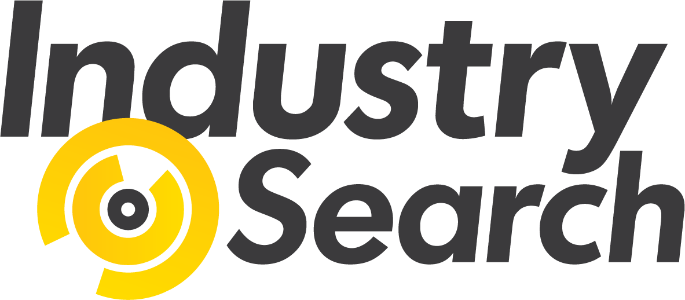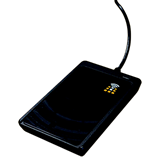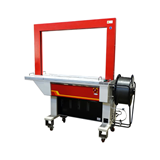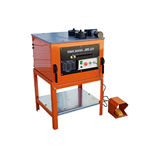Key Takeaways
- Automation is the top priority. With Australian labour shortages persisting, businesses are prioritising investments in practical automation like collaborative robots (cobots) and Automated Guided Vehicles (AGVs) to boost productivity without needing specialised programmers.
- Energy efficiency is now a primary ROI driver. Faced with wholesale electricity prices that have surged over the past two years, businesses are upgrading to energy-efficient motors, variable speed drives (VSDs), and modern compressors to cut operational costs. The payback period for these upgrades can be as short as 2-3 years.
- Data is the new currency. Businesses are buying "smart" equipment with embedded IIoT sensors. This data is being used for predictive maintenance, which can reduce equipment downtime by up to 30% compared to reactive or scheduled servicing.
- Onshoring is driving investment in flexible machinery. As companies bring manufacturing back to Australia, they are investing in versatile, multi-purpose equipment like 5-axis CNC machines that can be quickly retooled for different products, enhancing supply chain resilience.
- Safety technology is non-negotiable. New equipment purchases are increasingly focused on advanced safety features, like light curtains and 3D camera systems, to meet Australia's stringent WHS regulations and reduce workplace incidents.
- Financing is a cash flow strategy. A chattel mortgage is often the most tax-effective choice for Australian businesses, providing an immediate cash boost by allowing you to claim the full GST on the purchase price upfront.
- Retrofit before you replace. You can often gain the key benefits of modern technology, like energy efficiency (VSDs) or predictive data (IIoT sensors), by upgrading your existing equipment at a fraction of the cost of a full replacement.
Introduction: The new drivers of industrial investment
In the dynamic Australian industrial landscape of 2025, the conversation around capital equipment has fundamentally changed. The decision to invest in a new piece of machinery is no longer just about replacing an old asset; it's a strategic response to the powerful economic forces reshaping our industries. Persistent labour shortages, volatile energy prices, and a renewed focus on sovereign manufacturing capability are forcing businesses to be smarter and more strategic with their capital expenditure than ever before.
A recent Ai Group survey of Australian CEOs highlighted that "improving operational efficiency" and "investing in technology" are top business priorities. This is reflected in what businesses are actually buying. The trend is a clear move away from like-for-like replacements and towards technology that solves these core challenges. This article explores the key capital equipment trends for 2025, providing a practical guide for Australian industrial business owners on what your competitors are buying and why it matters for your business.
Automation to combat the skills shortage
The most significant driver of equipment purchasing in 2025 is the ongoing struggle to find skilled labour. With Jobs and Skills Australia consistently reporting shortages in technical trades, businesses are turning to practical, accessible automation to fill the gap.
This isn't about building a fully autonomous "lights-out" factory. The trend is towards targeted automation that assists, rather than replaces, the existing workforce.
- Collaborative Robots (Cobots): Unlike traditional industrial robots that require safety cages and specialised programmers, cobots are designed to work safely alongside humans. A small manufacturing business might invest in a cobot to handle a repetitive, low-skill task like machine tending or quality inspection, freeing up a skilled tradesperson for higher-value work.
- Automated Guided Vehicles (AGVs): In warehousing and logistics, AGVs are being used to automate the simple but time-consuming task of moving pallets and materials around a facility. This directly addresses the shortage of forklift operators and reduces the risk of on-site traffic accidents.
Energy efficiency as a primary ROI driver
With Australian wholesale electricity and gas prices having seen significant increases over the past few years, the energy consumption of your machinery is now a major operational cost. This has pushed energy efficiency from a "nice-to-have" feature to a primary factor in the return on investment (ROI) calculation for new equipment.
Businesses are investing in:
- High-efficiency motors (IE3/IE4): Upgrading from older, less efficient motors to modern IE3 or IE4-rated motors can reduce the energy consumption of a single machine by 5-15%.
- Variable Speed Drives (VSDs): A VSD allows a motor to adjust its speed to match the load, rather than running at 100% all the time. For applications like pumps, fans, and compressors, a VSD can deliver energy savings of 20-50%.
- Modern air compressors: Compressed air is often referred to as the "fourth utility" in industry, but it's also a major source of energy waste. New, more efficient compressor technology can have a payback period of as little as two to three years based on energy savings alone.
Data and connectivity for predictive maintenance
The "dumb" machine is a thing of the past. In 2025, businesses are increasingly purchasing equipment with built-in Industrial Internet of Things (IIoT) capabilities. These are machines fitted with sensors that monitor their own health in real-time.
A realistic scenario: The CNC machine
A metal fabrication business in Perth has a critical CNC machine that runs 16 hours a day.
- The old way: The machine is serviced every six months, whether it needs it or not. If a critical bearing fails unexpectedly between services, the machine goes down for two days, halting production and costing thousands in lost revenue.
- The smart way: Their new CNC machine has vibration and temperature sensors on its main spindle. The data is tracked on a simple dashboard. The maintenance manager notices a gradual increase in the spindle's vibration signature over a period of three weeks. This is an early warning sign that the bearing is beginning to fail. They can order the part and schedule the replacement for a planned weekend shutdown, resulting in zero unplanned downtime.
This shift from preventative (time-based) to predictive (condition-based) maintenance is a massive trend, with industry studies showing it can reduce downtime by up to 30%.
Onshoring and the push for flexible machinery
The supply chain disruptions of the early 2020s have created a significant push towards onshoring and increasing Australia's sovereign manufacturing capability. To compete with overseas production, these businesses require agility.
This is driving investment in flexible, multi-purpose equipment that can be quickly adapted to different products or smaller production runs.
- 5-axis CNC machines: These allow for the machining of highly complex parts in a single setup, reducing manual handling and increasing precision.
- Modular production lines: Instead of a single, fixed line, businesses are investing in modular equipment that can be reconfigured to produce different products, allowing them to pivot quickly to meet new market opportunities.
Financing your 2025 equipment investment
Once you've identified the right equipment, the next critical question is how to pay for it. For a capital-intensive business, a smart financing strategy is one of the most powerful tools you have for managing cash flow and enabling growth.
The cash flow argument for financing
Even if your business has the cash reserves to buy an asset outright, it's often not the wisest move. Your working capital is the lifeblood of your operation, it pays wages, covers unexpected repairs, and funds new opportunities. Financing a major asset allows you to preserve this vital cash buffer, ensuring your business remains resilient and agile. It lets you get an income-producing asset working for you immediately, paying for it over its useful life with the revenue it helps to generate.
Key Australian finance options
- Chattel Mortgage: This is the most popular equipment finance product for Australian businesses. The lender provides the funds to purchase the asset, and you take ownership from day one. This structure allows you to claim the full GST component of the purchase price on your next BAS, providing a significant, immediate cash flow benefit. You can also claim depreciation and the loan interest as tax deductions.
- Finance Lease: A lease is essentially a long-term rental where the financier owns the asset. This often results in lower monthly payments and can be treated as a tax-deductible operating expense. It’s an excellent choice for technology that becomes outdated quickly, as it provides a simple pathway to upgrade at the end of the term.
The role of a specialist broker
Before going directly to your bank, consider engaging a specialist asset finance broker. Unlike a bank that can only offer its own products, a broker has access to a wide panel of bank and non-bank lenders. They understand industrial equipment and can often find more competitive rates and flexible terms, especially for businesses with complex needs. They handle the application process for you, saving you valuable time.
The retrofit vs replace decision framework
For many small and medium-sized businesses, the high cost of a brand-new machine can be a major barrier to improving efficiency. However, you can often achieve many of the benefits of a new machine at a fraction of the cost by retrofitting and upgrading your existing, reliable assets.
The low-cost upgrade path
Instead of a complete replacement, a targeted upgrade can deliver a significant return on investment. The goal is to add modern capabilities to your existing mechanical workhorses. This approach allows you to boost efficiency and gather data without the massive capital outlay and installation disruption of a full replacement.
High-impact retrofit examples
- Energy Efficiency: Instead of buying a whole new production line, you can retrofit a Variable Speed Drive (VSD) to an existing large motor. By allowing the motor to adjust its speed to the load, a VSD can cut its energy consumption by 20-50%, delivering immediate operational savings.
- Data & Connectivity: You don't need a new "smart" machine to get smart data. You can add third-party IIoT sensors to your older, "dumb" equipment to start monitoring key indicators like vibration and temperature. This allows you to implement a predictive maintenance strategy and prevent costly, unplanned downtime.
Conclusion
The capital equipment purchasing decisions of 2025 are a clear reflection of the major challenges and opportunities facing Australian industry. The trends show a decisive move towards strategic investments in automation, energy efficiency, data connectivity, and flexible machinery. These are not just technology upgrades; they are fundamental business decisions designed to build more resilient, productive, and profitable operations. By understanding these trends, you can ensure your next capital investment is not just a purchase, but a powerful step towards future-proofing your business.





-160x160-state_article-rel-cat.png)






